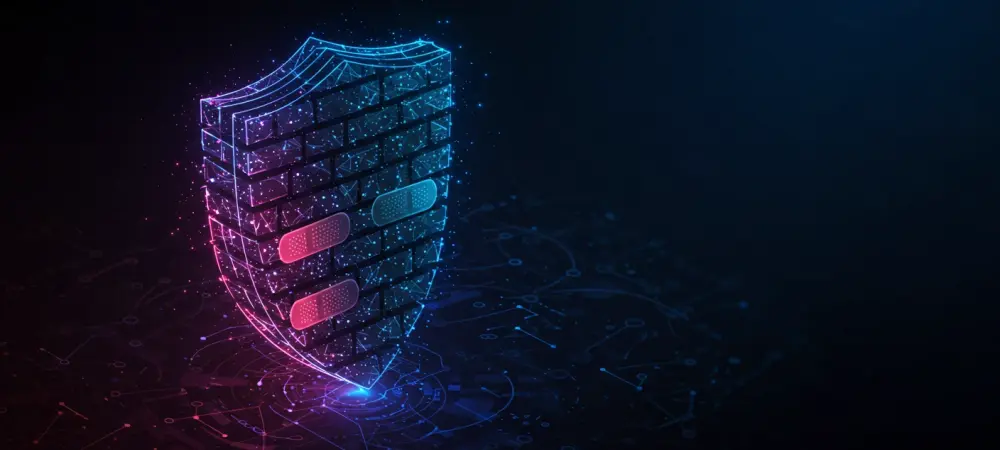In a recent move underscoring the relentless pursuit to safeguard cybersecurity infrastructure, Sophos and SonicWall have unveiled crucial patches aimed at addressing significant vulnerabilities in their products. These updates pertain to the Sophos Firewall and Secure Mobile Access (SMA) 100 Series appliances. The rapidly evolving digital landscape necessitates robust security measures, making these developments vital for users relying on these technologies. As the threat landscape persists in its complexity, ensuring the integrity of network systems remains paramount. Both companies have discovered vulnerabilities that could potentially allow malicious actors to execute remote code, compromising system integrity. Understanding the specifics of these vulnerabilities will provide a clearer perspective on the measures needed to alleviate risks and fortify systems against potential exploits.
An Overview of Sophos Vulnerabilities
Sophos has identified several critical flaws within its firewall systems that demand immediate attention. CVE-2025-6704 and CVE-2025-7624 remain of utmost concern due to their potential impact on network security. CVE-2025-6704 relates to a vulnerability in the Secure PDF eXchange (SPX) feature, potentially enabling remote code execution under specific configurations when the firewall operates in High Availability mode. Meanwhile, CVE-2025-7624 exposes systems to SQL injection attacks through the legacy SMTP proxy, which could lead to execution when certain quarantining policies are active. These vulnerabilities pose significant threats to organizations dependent on Sophos’s firewall solutions. Addressing them involves not only applying patches but also reassessing the overall security strategy. The company addressed both vulnerabilities while also resolving a high-severity command injection vulnerability (CVE-2025-7382) associated with the WebAdmin component. This particular flaw risked pre-auth code execution on HA auxiliary devices given specific configurations, underscoring the necessity of timely intervention.
Sophos’s Collaborative Efforts and Further Findings
Additional issues have been identified within Sophos’s security framework, warranting further examination and immediate action. The business logic vulnerability known as CVE-2024-13974 in the Up2Date component previously allowed attackers to manipulate DNS environments and execute remote code. This vulnerability affects Sophos Firewall v21.0 GA and older versions. Similarly, CVE-2024-13973 involved a post-auth SQL injection vulnerability within WebAdmin, risking arbitrary code execution by administrators and impacting the same version range. The discovery of these vulnerabilities showcases the importance of collaboration with cybersecurity entities. The U.K. National Cyber Security Centre (NCSC) played a pivotal role in identifying and reporting the aforementioned issues. Such partnerships are critical in enhancing the resilience of cybersecurity measures, ensuring vulnerabilities are effectively identified and remediated. Sophos has taken substantial steps to mitigate these risks by releasing necessary patches across impacted versions, particularly v21.5 GA and older.
SonicWall’s Approach to Security Flaws
SonicWall’s proactive measures in addressing vulnerabilities within its SMA 100 Series web management interface are also noteworthy. The identified flaw, CVE-2025-40599, holds a CVSS score of 9.1, signifying its potential severity. This vulnerability could allow remote attackers with administrative access to upload arbitrary files, leading to the execution of malicious code. SonicWall responded promptly by issuing fixes in version 10.2.2.1-90sv, minimizing the risk associated with the device’s interface, including products like SMA 210, 410, and 500v.
Parallel to the discovery of this vulnerability, SonicWall faced the additional challenge of an identified threat actor known as UNC6148 by Google’s Threat Intelligence Group (GTIG). This actor leveraged patched SMA 100 series devices to deploy a backdoor tool, raising concerns regarding the effectiveness of existing security measures and the necessary vigilance required to sustain protective barriers. SonicWall has issued advisories recommending users implement stricter access controls, highlighting the necessity of steps like disabling remote management access and enforcing multi-factor authentication.
Strategic Recommendations for SonicWall Users
To further ensure the security of SonicWall devices, it is crucial for users to adhere to recommended security protocols post-patching. SonicWall urges users to disable remote management access on external-facing interfaces to reduce potential exposure to attacks. Tightening security measures includes resetting passwords, reinitializing OTP bindings, and enforcing multi-factor authentication for all users and administrators. This ensemble of precautions seeks to enhance the security posture, curtailing opportunities for unauthorized access. A comprehensive approach involves encouraging organizations to review logs and histories for anomalies that may indicate intrusion attempts or unauthorized activities. SonicWall’s advisory on backing up configurations and implementing virtual machine reinstatement procedures for SMA 500v users further underscores the emphasis on thorough security management practices. These measures intend to create a robust security framework, with layers designed to prevent future intrusions and mitigate damage from potential exploits.
Sustained Vigilance and Future Considerations
Sophos has uncovered critical vulnerabilities within its firewall systems necessitating swift action. Of particular concern are CVE-2025-6704 and CVE-2025-7624 due to their potential threat to network security. CVE-2025-6704 is linked to a flaw in the Secure PDF eXchange (SPX) feature, which may allow unauthorized remote code execution when specific configurations are in place, especially when the firewall is in High Availability mode. On the other hand, CVE-2025-7624 opens the door to SQL injection attacks via the outdated SMTP proxy, potentially leading to execution when certain email quarantining policies are active. These vulnerabilities pose significant risks to organizations relying on Sophos’s firewall solutions. Addressing them involves applying patches but also reassessing the entire security approach. Sophos has tackled both vulnerabilities and resolved another high-severity issue (CVE-2025-7382) associated with the WebAdmin feature. This flaw, threatening pre-authenticated code execution on HA auxiliary devices, highlights the critical nature of prompt intervention.

